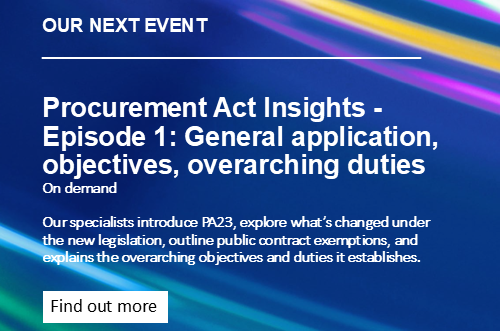- Details
Defective Premises Act 1972 and Building Liability Orders
Helen Arthur and Rachel Murray-Smith analyse a recent Technology and Construction Court decision finding that a freeholder, a Special Purpose Vehicle, had breached a Freehold Purchase Agreement.
The Technology and Construction Court (TCC) has handed down a significant decision in 381 Southwark Park Road RTM Co Ltd & Ors v Click St Andrews Ltd [2024] EWHC 3179 relating to Building Liability Orders (BLO) and claims under s.2A of the Defective Premises Act 1972.
Building Liability Order
Construction projects can involve complex corporate structures, invariably facilitated by special purpose vehicles (SPV) with the ultimate aim of reducing the financial risk for the parent company.
Where such structures are used, it has made it difficult to enforce any claims where the SPV has been dissolved or there has been an intercompany restructure resulting in the assets being removed from the SPV.
A BLO was introduced by s.130 of the Building Safety Act 2022 (BSA) giving the High Court the power to extend specific liabilities of one company to any other associated companies enabling those associated companies to be joint and severally liable with the original company.
The intent of BLOs is to limit the ability for contractors to avoid liability for defective works through the use of SPVs.
S.131 of BSA sets out specific corporate structures that would deem the company to be ‘associated’ with the original entity including, where the associated company controls the original entity (i.e. parent company), or if both the original entity and the parent company are controlled by a third company (i.e. sister company).
A BLO can only be granted if:
- The liability is a ‘relevant liability’; and
- It is ‘just and equitable’.
A ‘relevant liability’ is defined by the BSA as including claims under:
- The Defective Premises Act 1972 (DPA);
- s.38 of the Building Act 1984 (yet to be brought into force); or
- As a result of a ‘building safety risk’ – meaning “a risk to the safety of people in or about the building arising from the spread of fire or structural failure”.
There is no definition in the BSA of what is ‘just and equitable’ in respect of a BLO however the decision in 381 Southwark Park Road does help to provide some guidance on the procedure for a BLO as set out below.
DPA
The BSA inserted a new s.2A into the DPA that came into force on 28 June 2022. This new s.2A applies where a person, in the course of a business, takes on work in relation to any part of a building containing one or more dwellings.
The duty owed is “to see that the work is done in a workmanlike or (as the case may be) professional manner, with proper materials and so that as regards the work, the dwelling is fit for habitation when the work is completed”.
This new duty now means that a claim under the DPA can be brought for refurbishment works rather than the original works creating a dwelling.
The duty is to both the person for whom the work is done and each person who holds or acquires an interest in a dwelling in the building.
The limitation period for claims under s.2A of DPA is 15 years for works completed on or after the section came into force being – 28 June 2022.
Background to 381 Southwark Park Road
A claim was brought by the residents’ right to manage company (RTM) together with 10 leaseholders against Click St Andrews Limited (Click) (an SPV) which at the time owned the freehold of the property and Click Group Holdings Limited (the parent company of Click).
In 2020 the RTM agreed to purchase the freehold of the property from Click on the basis that, as part of the Freehold Purchase Agreement (FPA) (made on 26 February 2020), Click would first develop the property by removing a pitched roof and installing an additional storey of three prefabricated modular units.
As part of those works, in July 2021, the pitched roof was removed but the property had not been kept watertight and water ingress throughout the building occurred causing damage.
Upon further investigation by the claimants, a number of additional defects were uncovered, including structural and fire safety issues.
The claimants progressed a claim against Click which included claims under s.2A of the DPA and sought a BLO against the parent company.
Decision
Jefford J drew comparisons between s.1 and s.2A of the DPA stating that: “It is well-established that the duty owed under section 1, which is in the same terms, is a single duty to see that the outcome is that the dwelling is fit for habitation. Lack of fitness for habitation is correspondingly a necessary element of breach of that duty. I can see no reason why the duty owed in section 2A of the DPA should not be characterised in the same way.”
Given that the vast majority of the alleged breaches occurred at the time before s.2A of the DPA came into force and failed to establish a lack of fitness for habitation, it was held that no duty under s.2A of the DPA was owed. Therefore, this aspect of the claim failed.
Due to a failed claim under the DPA, it followed that the claimants did not have the ability to seek a BLO unless they could successfully argue that there was a ‘building safety risk’.
The claimant’s expert architect gave evidence on fire safety defects highlighting issues with fire-stopping in that the compartmentation between the walls did not meet the functional requirements of the Building Regulations together with a lack of protection on certain structural steel frames.
As such, Jefford J held that: “In light of Mr Ferguson’s evidence, I am satisfied that in carrying out the works, Click St Andrews was in breach of clauses 5.2(a), (d) and (e) of the FPA in each of the respects set out above and that these give rise to a relevant liability for the purposes of section 130(3)(b) of the Building Safety Act 2022. “
Jefford J left the making of the BLO itself for a further hearing. In respect of the procedure for a party wanting to seek a BLO, the judge noted that: “it certainly does not require a party to make that claim within existing proceedings. It would be surprising if it did since the circumstances in which it might be just and equitable to make the order may not arise until after proceedings to establish a relevant liability are concluded”.
The claimants in this case did not identify any other corporate body against which such an order might be sought, however, “That is in no way a criticism and in no way impacts on any application for a BLO that may be made”.
The claimant’s sought a BLO within their claim, which was noted as being a “sensible and efficient” way to proceed but a failure to do so would not preclude a BLO being sought against some other associated company.
Conclusions
Employer clients should note:
- The need to evidence lack of fitness for habitation when considering pursuing a claim under s.2A of the DPA. The 30 year retrospective limitation period may well give rise to increased focus by Employers on claims under the DPA, particularly where contractual limitation period have long since expired.
- The potential availability of a BLO where a project was delivered through a complex corporate structure such as an SPV.
Whilst some insight into the procedure for making a BLO is helpful, we will need to wait and see how the ‘just and equitable’ test is applied. In the meantime, the Explanatory Notes accompanying the BSA state that in relation to a BLO: “The High Court must consider whether it is just and equitable to grant the building liability order, for example whether the parent company can receive a fair trial.”
Once granted, a BLO will undoubtedly help recover significant sums from entities which previously would’ve escaped liability.
Helen Arthur is a Senior Professional Support Lawyer and Rachel Murray-Smith is a Partner at Sharpe Pritchard LLP.
For further insight and resources on local government legal issues from Sharpe Pritchard, please visit the SharpeEdge page by clicking on the banner below.
This article is for general awareness only and does not constitute legal or professional advice. The law may have changed since this page was first published. If you would like further advice and assistance in relation to any issue raised in this article, please contact us by telephone or email
|
Click here to view our archived articles or search below.
|
|
ABOUT SHARPE PRITCHARD
We are a national firm of public law specialists, serving local authorities, other public sector organisations and registered social landlords, as well as commercial clients and the third sector. Our team advises on a wide range of public law matters, spanning electoral law, procurement, construction, infrastructure, data protection and information law, planning and dispute resolution, to name a few key specialisms. All public sector organisations have a route to instruct us through the various frameworks we are appointed to. To find out more about our services, please click here.
|
|
OUR RECENT ARTICLES
December 10, 2025
Sharpe Pritchard appointed to £60m London Boroughs’ Legal Alliance frameworkSharpe Pritchard, one of the UK’s leading public law firms, has been re-appointed to the London Boroughs’ Legal Alliance (LBLA) Solicitors Panel.
November 20, 2025
Strengthening the standards and conduct framework for local authorities in EnglandJames Berry offers his insight into how the proposed changes to standards and conduct rules will affect local authorities.
November 04, 2025
Procuring and operating open frameworks under the Procurement Act 2023Chantelle Pink offers advice to authorities on open frameworks and how to procure them.
October 31, 2025
Building Solar – 5 Top Tips for Solar Farm Construction ContractsSolar farm construction contracts are in focus following fascinating insights into the continuing global uptake and expansion of renewables, and particularly solar, within the 2025 mid-year report of Ember, a global energy think tank.
|
|
OUR KEY LOCAL GOVERNMENT CONTACTS
|
||
|
Partner 020 7406 4600 Find out more |
||
|
Partner 020 7406 4600 Find out more |
||
|
Rachel Murray-Smith Partner 020 7406 4600 Find out more |







 Catherine Newman
Catherine Newman
